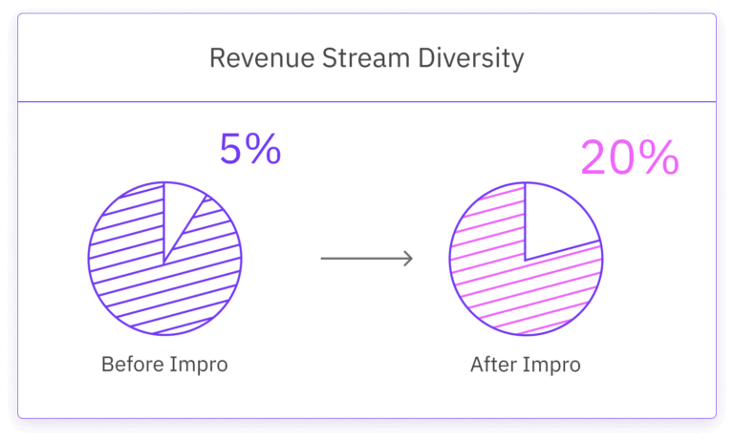Shifting from micro-coaching to a performance strategy represents a dynamic evolution in how companies promote employee development. Integrating Artificial Intelligence (AI) enhances the efficacy of performance strategies, elevating employee engagement and overall business outcomes.
Incorporating AI into daily operations allows for detailed analysis and customization, tailoring performance strategies to individual needs. This personalized approach values each employee’s strengths and areas for improvement and ensures that interventions are targeted and impactful.
Organizations create a workplace culture centered on continuous employee growth by implementing a performance strategy augmented by AI. This approach promotes a dynamic environment of learning and adaptability, where employees are encouraged to evolve and contribute actively to the company’s success.
This strategic shift goes beyond a mere technological upgrade; it signifies a deliberate move toward acknowledging and nurturing the complete potential of every employee. As a result, businesses can anticipate significant success driven by a workforce that is not only proficient but also motivated and committed to ongoing improvement.
What is a Performance Strategy?
A performance strategy is a structured approach to improve an organization’s or individual’s efficiency and effectiveness. It involves setting clear objectives, determining the best way to achieve them, and measuring progress.
The first step in a performance strategy is setting clear, measurable goals. These goals should align with the overall objectives of the organization or individual. They may involve improving specific skills, increasing productivity, or enhancing customer satisfaction.
Next, the strategy must outline the actions necessary to achieve these goals. This may involve training programs, process improvements, or new technologies. The plan should be realistic and practical, considering the available resources and the organization’s or individual’s circumstances.
Finally, the performance strategy should include a system for measuring progress and evaluating results. This could involve key performance indicators (KPIs), regular performance reviews, or feedback sessions.
Organizations and individuals can improve their performance and achieve their objectives by setting clear goals, outlining a plan of action, and regularly measuring progress.
Benefits of Performance Strategy Enhanced by AI:
Cultivation of a Growth Mindset
- When combined with AI analytics, performance strategy encourages a mindset that values continuous learning and growth.
- Employees are motivated to embrace challenges, learn from feedback, and view setbacks as opportunities for improvement.
Swift and Substantial Improvements
- Integrating AI algorithms allows for the swift analysis of performance data.
- Employees receive targeted feedback, enabling them to substantially improve specific skills or areas identified through the coaching process.
Heightened Productivity
- With the aid of AI, performance strategy contributes to increased productivity by addressing specific skill gaps efficiently.
- Employees can focus on precise areas of improvement, leading to more effective and targeted efforts in their daily tasks.
Elevated Job Satisfaction
- Performance strategy and AI-driven insights enhance job satisfaction as employees witness tangible progress in their skills.
- The personalized nature of the coaching process ensures that feedback aligns with individual goals, fostering a sense of accomplishment and fulfillment.
Fostering a Supportive Work Atmosphere
- Combining performance strategy and AI contributes to developing a supportive work environment.
- As employees engage in focused coaching, a sense of camaraderie and mentorship develops, creating a workplace culture where individuals feel supported in their professional growth.
Building "Friend for Life" Mentorship Ethos:
- Enriched by AI, performance strategy establishes a foundation for enduring mentorship relationships.
- Employees feel a sense of trust and support, leading to lasting connections within the organization, characterized by a mentorship ethos that extends beyond immediate coaching interactions.
Implementing Performance Strategy in Business
Assessing Employee Needs
The first step in implementing a performance strategy is evaluating the needs of your employees. This process encompasses understanding their strengths and weaknesses and pinpointing the areas they need to enhance. AI-driven assessments can provide valuable insights, making the process more efficient and precise.
Setting Clear Goals
After identifying the areas requiring improvement, setting clear, attainable goals is imperative. These targets should align with the SMART (Specific, Measurable, Achievable, Relevant, Time-bound) framework and can be refined with AI-generated insights to ensure they are unambiguous and feasible.
Providing Regular Feedback
Consistent feedback, facilitated by AI-powered performance tracking tools, is a cornerstone of performance strategy. It serves to help employees comprehend their progress, offering opportunities for them to voice questions and seek clarification.
Encouraging Skill Development
When coupled with AI-driven personalized learning programs, performance strategy is not solely about rectifying errors but also about fostering skill development. This involves teaching employees the six essential learning skills pertinent to their role and encouraging them to apply them in their daily tasks.
Successful Performance Strategy Examples
Harnessing the potential of AI in performance strategy, several businesses have successfully integrated these strategies and witnessed significant enhancements in their performance. Here, we delve into these success stories and how companies like Impro.AI can help.
Procter & Gamble (P&G) Performance Strategy
P&G, a multinational consumer goods corporation, hired a consulting firm to help them develop their “Organization 2005” initiative. The firm assisted P&G in developing this new strategy, which involved setting clear goals, streamlining processes, and implementing a unique matrix structure to enhance collaboration and efficiency across the organization. This partnership helped P&G to successfully navigate a period of significant change and improve its overall performance.
MarkiTech: Accelerated Growth through Performance Strategy

MarkiTech, a leading technology marketing company, utilized the power of performance strategy to turbo-charge its growth. Working with ImproAI, they identified impactful KPIs that contributed to their financial growth, diversified revenue sources, grew vital customer accounts, and increased partnerships.
In the first year of implementing this strategy, MarkiTech saw a 50% increase in revenue, which doubled in the second year. Moreover, they experienced a 10% increase in employee engagement, contributing to a healthier and more productive work environment.
Their successful collaboration with Impro.AI led to the creation of an independent incubator company, further diversifying their business and reducing risk.
Overcoming Challenges in Performance Strategy
Time Constraints
One of the primary challenges encountered when implementing a performance strategy is time constraints. However, AI-powered automation can streamline the feedback process, mitigating time-related challenges.
Resistance to Change
Another challenge is resistance to change. To address this, it’s crucial to clearly articulate the advantages of performance strategy, enhanced by AI, and offer support throughout the transition process.
Maximizing the Potential of Performance Strategy
Creating a Supportive Environment
Creating a supportive environment is key in bringing out the best in employees through performance strategy. This involves:
- Cultivating Trust: Develop a culture where employees feel safe to request assistance and are open to receiving feedback. This trust can be fostered by promoting transparency and open communication.
- Leveraging AI Tools: Utilize AI-driven tools for unbiased evaluations, which can help identify areas for improvement. Such tools ensure confidentiality, making employees more comfortable in receiving feedback.
- Promoting a Learning Culture: Encourage a learning mindset where mistakes are seen as opportunities for growth rather than failures. This can help employees to improve their skills and knowledge continually.
Measuring and Tracking Progress
Tracking progress is critical to ascertain the effectiveness of performance strategy. It involves:
- Regular Check-ins: Conduct frequent check-ins or one-on-one meetings to discuss progress and address challenges. These sessions can provide immediate feedback and help maintain focus on personal development goals.
- Performance Reviews: Implement comprehensive performance reviews to assess the overall impact of performance strategy on an employee’s performance. This can help identify successful strategies and areas that need further attention.
- Utilizing AI-Generated Insights: Use AI to provide detailed insights into an employee’s development journey. AI can analyze large amounts of data to create a clear overview of an employee’s progress, helping to tailor future coaching sessions more effectively.
- Setting Clear Goals: Clearly define what success looks like for each employee. Clear, measurable goals can motivate employees and provide a tangible way to track progress.
- Celebrating Success: Recognize and celebrate achievements, no matter how small. This can boost morale and motivate employees to continue their learning journey.
The Confluence of Performance Strategy and AI Integration
Performance Strategy emerges as a potent tool for maximizing employee potential and bolstering business performance, especially when synergized with the capabilities of Artificial Intelligence. It demands commitment from the performance strategist and the employee, but the transformative results make it worthwhile. Businesses can harness the full power of performance strategy and AI by nurturing a supportive environment and tracking progress.
Remember, the journey to peak performance is a continuous process, and with performance strategy and AI integration, every step counts! As we seamlessly integrate these practices into our work culture, we will see a rise in value and esteem for our employees, develop a friend-for-life mentorship, and foster a mindset that is open to continuous learning and growth, driven by the dynamic combination of performance strategy and AI.









